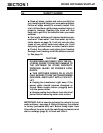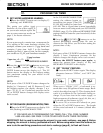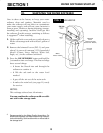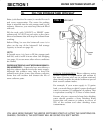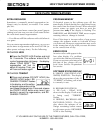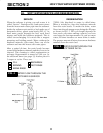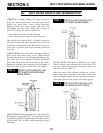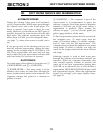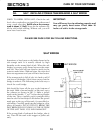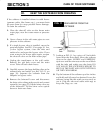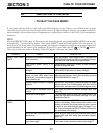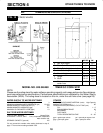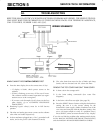
HOW YOUR WATER SOFTENER WORKS
SECTION 2
12
2B. SOFT WATER SERVICE AND REGENERATION
BRINING: During brining, the brine is moved
from the salt storage area, into the resin tank.
Inside the resin tank, brine cleans hardness
minerals from the resin beads and they are
discharged out the drain. How much brine is
needed to clean the resin depends on:
-- the amount of resin in the softener,
-- how fast the brine goes through the bed.
The nozzle and venturi (FIG. 6) make suction to
take brine from the salt tank and put it into the
resin tank. It keeps the brine flow down to a very
slow rate to get the best resin cleaning with the
least salt.
BRINE RINSE: After all of the brine goes into the
resin tank, the brine valve closes. Water keeps
flowing the same way it did during brining except
the brine flow has stopped. Hardness minerals
and brine flush from the resin tank to the drain.
Brining and brine rinse together vary in length of
time they take, relative to the fill cycle length.
FIG. 6 WATER FLOW THROUGH THE
SOFTENER IN BRINING AND
BRINE RINSE
BACKWASH: During backwash, water flows UP
through the resin tank (FIG. 7) at a fast rate to flush
iron minerals, dirt and sediments from the bed and
to the drain. The bed lifts and expands for good
cleaning.
FIG. 7 WATER FLOW THROUGH THE
SOFTENER IN BACKWASH
FAST RINSE: Backwash is followed by a fast
flow of water down through the resin tank. The
fast flow packs the resin bed and gets it ready for
return to service (FIG. 8).
After fast rinse, the softener returns to service.
Hard water goes into the resin tank where the
resin bed again takes out the hardness minerals.
Soft water goes to the house soft water pipes.
FIG. 8 WATER FLOW THROUGH THE
SOFTENER IN FAST RINSE



